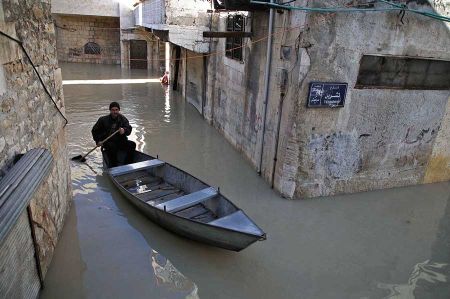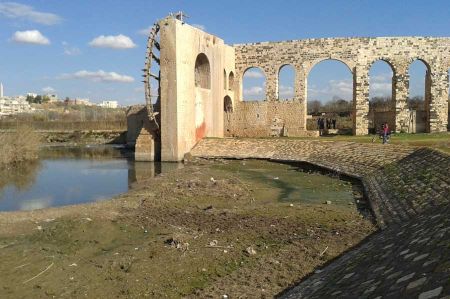The Orontes - important water supplier in the Bekaa valley
- Written by Portal Editor
For the past two centuries, the region of the rising sun, the Middle East, often referred to by Europeans as the Orient, has been an essential part of archaeological research and the history of human development and their settlement areas.
In the now very dry areas, the supply of water was of particular importance when it came to settlements that were to be used permanently. A good example of this is the Orontes River, which flows through Lebanon, Syria and Turkey in its course, despite its total length of just 240 kilometers.
Granary Bekaa Plain was important even in Roman times

In contrast to the river Litani, which rises in the immediate vicinity and flows south, the water of the Orontes flows parallel to the sea towards the north. After just a short way after the source, it goes almost 600 meters down through a gorge to Lake Homs, which was dammed by the Romans in ancient times to use the water for irrigation of the fields. In the region of Hamah, the valley widens considerably and thus provided space for other ancient cities such as Apamea and Larissa. The Orontes Valley continues up to the rocky barrier of the Jisr al-Hadid mountain range. Now the river changes direction to the west until it reaches the plain of Antioch.
Through two mighty tributaries from the north, the Afrin and the Karasu, which flow through the former Lake of Antioch, the Orontes gains in power. Today, the region is largely deprived of water through an artificial canal, the Nahr al-Kowsit. We continue along the modern city of Antakya, as Antioch is called today, on what is now Turkish territory, southwest into another gorge, where the water of the Orontes flows 50 meters further down towards the sea for the next 16 kilometers. At the small port town of Samandagi, which was called Seleucia Pieria in antiquity, the waters of the Orontes reach the sea after 240 kilometers from its source.
Orontes - not navigable but still an important route
For many centuries the Orontes formed the natural borderline between the frequently changing states. Even the Egyptians saw the Orontes as their northern border to the Annurru region, in the east of Phenicia. For the crusaders of the 12th century, the Orontes was the permanent border between the administrative districts of Antioch and Aleppo. JUst the name of the Orontes changed during history due to changing rulers from the river of the Levantes to Draco, Typhon and Axius. In addition, there were the different names in the countries, so the Orontes was also given the modern name Asi, which colloquially means "Rebel", since the Orontes, in contrast to all other rivers, flows from south to north.
How important this little river Orontes was for the people in history can only be guessed at from the description in the book "Un jardin sur lÓronte" by the French poet Maurice Barres (1862 - 1923).
Please also read:
Short stop at the Rhine Falls near Schaffhausen
The Edessa waterfall - short trip to the city
